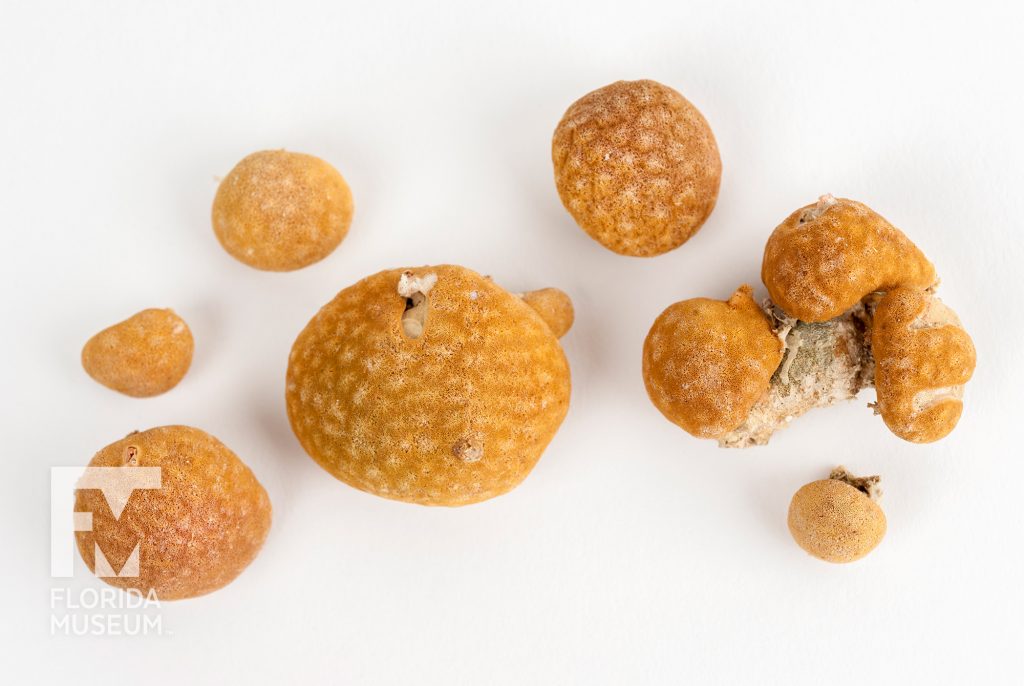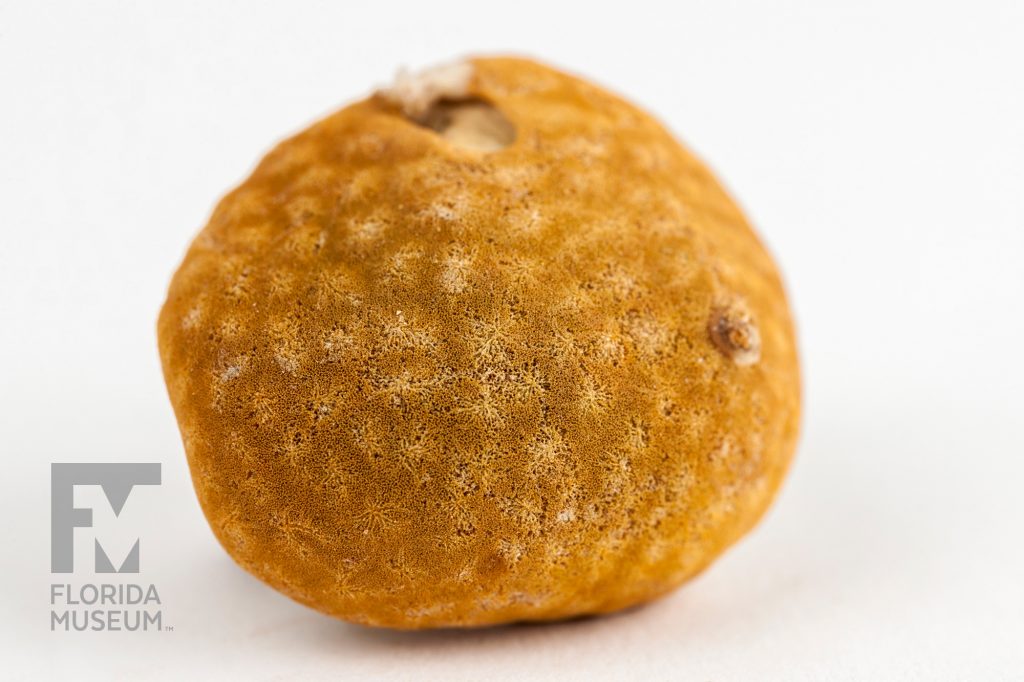Scientists study ancient climate using “natural archives” such as ice and sediment cores, tree rings and certain animal remains. Sclerosponges grow very slowly, so their limestone skeletons hold local climate records that can go back centuries.
Summary
Sclerosponge (Acanthochaetetes wellsi)
From Palau, Western Pacific Ocean, May 1996
Collection
Story
When you think of sponges the first thing that comes to mind is they are really squishy animals, or well, bath objects really, that you can pick up water with and sort of caress yourself with and so forth. But most sponges, in addition to being squishy, also have little fibers of glass in them — kind of like fiberglass — called spicules made of silica. Bath sponges luckily don’t have that; that’s why we can use them the way we do.
Now one group of sponges is unusual in that in addition to very minute fibers of silica they lay down a very solid, hard limestone skeleton and those are the sclerosponges. And these animals evolved a couple of times and they have bodies that resemble corals because it’s made of solid limestone. These were discovered only a couple of decades ago and they live deep in reef caves but they have a very interesting history. Back in the Age of the Dinosaurs and before that, they were so big and abundant that they formed reefs; today however, they survive only inside caves.
Another really curious aspect of their body is that they grow very, very slowly and live very, very long, so they add only a fraction of a millimeter of limestone a year and they can live for over 100 years. So people use their skeletons as recorders of past climates by putting cores into them and measuring the changes in the elemental isotopes and seeing how ocean chemistry and temperature have changed. So they are basically dipsticks of climate change in addition to being living fossils.
Gustav Paulay
Curator, Invertebrate Zoology*
Florida Museum of Natural History
Exhibit
On display Sept. 23, 2017-Jan. 7, 2018, Rare, Beautiful & Fascinating: 100 Years @FloridaMuseum celebrated the Museum’s rich history. Each Museum collection was asked to contribute its most interesting items and share the stories that make them special. Though the physical exhibit is closed, this companion website remains online, providing an opportunity to experience the Florida Museum’s most treasured specimens.
Exhibit Area: Objects Tell Stories
Theme: Changing Climate
 Want to see more? Explore more than 300 breathtaking color photos of plants, animals, fossils and cultural heritage materials from the Florida Museum of Natural History’s collections in the award-winning book All Things Beautiful available from the University Press of Florida.
Want to see more? Explore more than 300 breathtaking color photos of plants, animals, fossils and cultural heritage materials from the Florida Museum of Natural History’s collections in the award-winning book All Things Beautiful available from the University Press of Florida.
*This title was accurate at the time the exhibit was on display in 2017. Please visit the collection website to verify current staff and student information.


